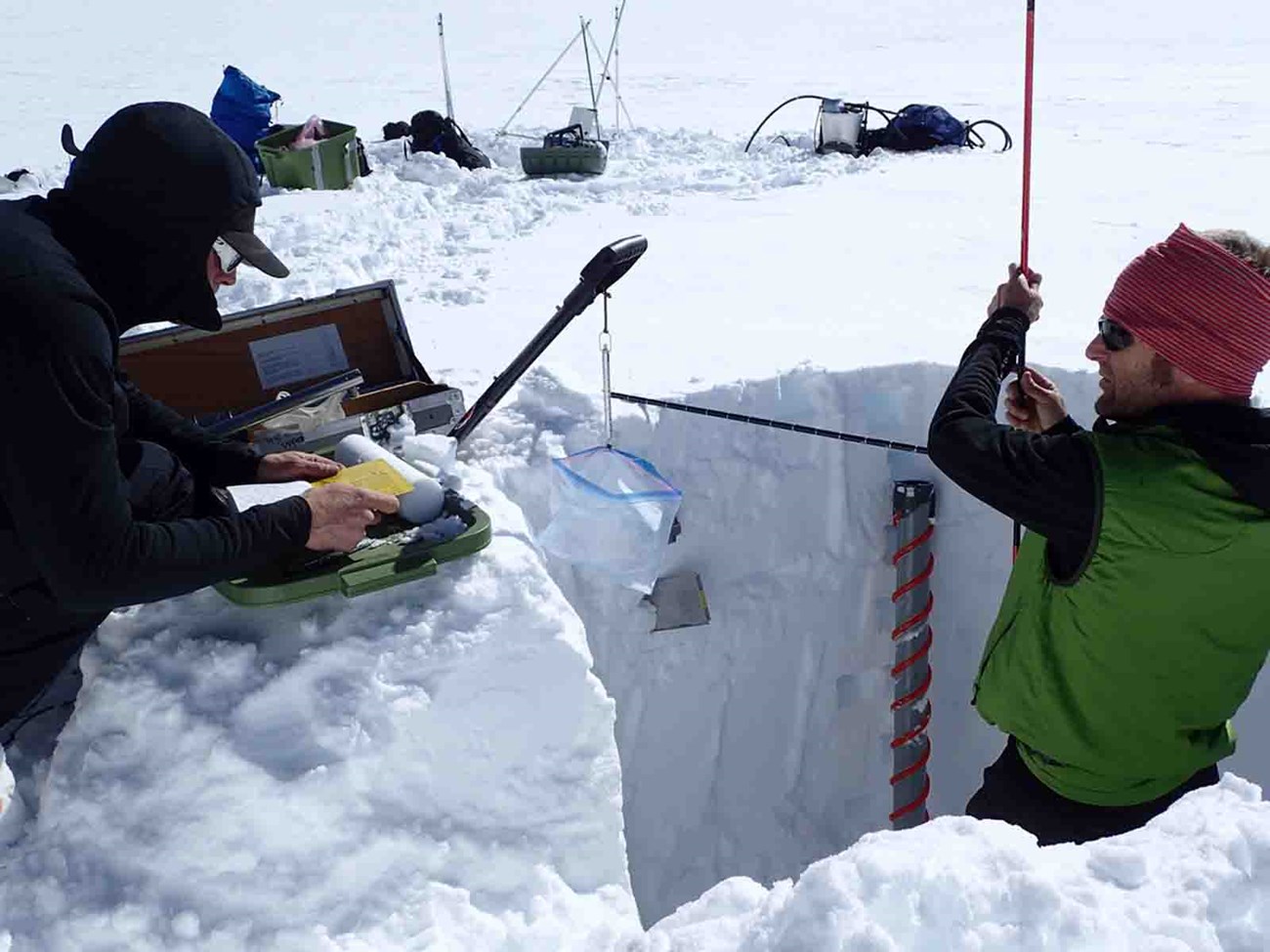
NPS photo.
Geoconservation
The National Park Service works to conserve geologic resources and related visitor experiences as critical elements of overall natural resources stewardship. In nature, living (biotic) and non-living (abiotic) components of the ecosystem are inextricably linked, so NPS goals for conserving natural systems require attention to maintaining both biodiversity and geodiversity.
Earth scientists from many disciplines work to improve the Park Service's ability to gather, analyze, and use geoscience information. Geologic resources management is part of each park's natural resource activities. Learn more about servicewide Geoconservation Programs.
Geological Monitoring
Geological monitoring involves taking repeated measurements in order to detect long term change. Monitoring data can be used to help land managers assess whether changes in a geologic resource are within a normal range of variation, or if the observed changes dictate a corrective action in management practices.

Permafrost in Alaska and mountain permafrost in the contiguous states forms the physical foundation on which terrestrial ecosystems and infrastructure rest. Factors that influence permafrost can include: climate, physical terrain, hydrology, vegetation, geology, soil, and disturbances. The geologic monitoring manual provides methods to establish the status and trends of geologic resources within dynamic ecosystems.
- Geologic Resources Division
Monitoring Glacial Features and Processes
- Offices: Geologic Resources Division

The dynamic nature of glaciers strongly influences the hydrologic, geologic, and ecological systems in the environments in which they exist. Glacier change is important because it provides basic data for understanding and assessing past, current, and possible future conditions of the local, regional, and global environment. The geologic monitoring manual provides methods to establish the status and trends of geologic resources within dynamic ecosystems.
Resource Management Activities—Glaciers
- Glacier National Park
Series: Photographing Change in Glacier National Park
- Glacier Bay National Park & Preserve
One Way to See the Future of Alaska’s Unparalleled Forests: Look at Their Past
- Type: Article
- Locations: Yosemite National Park
- Offices: Geologic Resources Division
- Type: Article
- Locations: Voyageurs National Park
- Offices: Geologic Resources Division
- Type: Article
- Locations: Rocky Mountain National Park
- Offices: Geologic Resources Division
- Type: Article
- Locations: Olympic National Park
- Offices: Geologic Resources Division

Olympic National Park mostly contains igneous and sedimentary rocks that were formed in the last 60 million years. Many of these rocks geologic formations were deposited offshore as an accretionary prism and were uplifted and folded by the tectonic convergence between the Juan de Fuca and North American plates.
- Type: Article
- Locations: Mount Rainier National Park
- Offices: Geologic Resources Division
Education
Educational programs support the National Park Service mission to protect and preserve park resources and values for the enjoyment of present and future generations. Parks and programs deliver geoscience information and stories about geoheritage issues so people understand, value, and support science-based management in national parks.
Last updated: September 18, 2019









